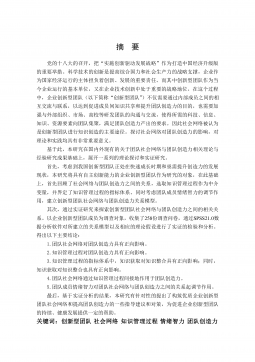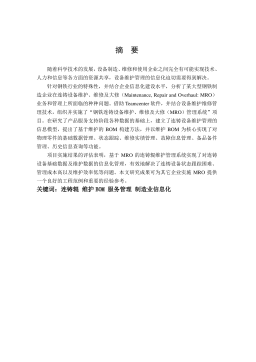锥盒形件分区压边拉深的成形性能研究
摘要锥盒形件是锥形和矩形形状的组合,既有锥形件易起皱的特点,又有矩形件变形不均匀的特征。成形过程是拉深和胀形的复合成形,容易产生外皱、内皱和破裂等缺陷,实际中常通过压边力来控制。压边力是拉深成形的一个重要工艺参数,其主要作用是用来产生摩擦阻力,以增加板料中的拉应力,控制材料的流动,避免起皱。然而对于不规则零件,由于拉深过程中板料凸缘不同位置对压边力的需求是不一致的,如果在板料上都施加相同的压边力,就容易导致局部缺陷。所以最好采用分区压边的方式,根据零件变性特点与材料流动规律,合理划分多个区域,并施加不同的压边力。本文采用板料成形专用软件DYNAFORM对板厚为0.8mm的St16材料进行了锥盒...
相关推荐
-
USST_Arts_112480743自动生产线的同步维修模型及案例分析VIP免费

 2025-01-09 14
2025-01-09 14 -
USST_Arts_112480745基于供需网特征理念的企业间关系状态研究VIP免费

 2025-01-09 14
2025-01-09 14 -
USST_Arts_112480756 我国城镇化与能源消费结构间关系的研VIP免费

 2025-01-09 20
2025-01-09 20 -
USST_Arts_112490763 企业创新型团队社会网络、知识管理过程及团队创造力关系研究VIP免费

 2025-01-09 13
2025-01-09 13 -
USST_Arts_112490769创新团队执行力影响因素分析VIP免费

 2025-01-09 15
2025-01-09 15 -
USST_Arts_112070649基于团队自反性的科技型企业TMT特征对企业绩效的影响研究VIP免费

 2025-01-09 19
2025-01-09 19 -
TR公司工业机器人市场发展战略研究VIP免费

 2025-01-09 23
2025-01-09 23 -
二氧化碳套管式气冷器的研究VIP免费

 2025-01-09 16
2025-01-09 16 -
非共沸混合物在微通道水平单管内流动沸腾特性VIP免费

 2025-01-09 69
2025-01-09 69 -
基于MRO的连铸辊维护管理系统研究VIP免费

 2025-01-09 11
2025-01-09 11
相关内容
-

USST_Arts_112070649基于团队自反性的科技型企业TMT特征对企业绩效的影响研究
分类:高等教育资料
时间:2025-01-09
标签:无
格式:PDF
价格:15 积分
-

TR公司工业机器人市场发展战略研究
分类:高等教育资料
时间:2025-01-09
标签:无
格式:PDF
价格:15 积分
-

二氧化碳套管式气冷器的研究
分类:高等教育资料
时间:2025-01-09
标签:无
格式:PDF
价格:15 积分
-

非共沸混合物在微通道水平单管内流动沸腾特性
分类:高等教育资料
时间:2025-01-09
标签:无
格式:PDF
价格:15 积分
-

基于MRO的连铸辊维护管理系统研究
分类:高等教育资料
时间:2025-01-09
标签:无
格式:PDF
价格:15 积分






